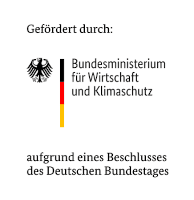Light, fast, recyclable. These three attributes are an extremely accurate description of what the sole of a top running shoe of the ON brand must be like. A good high performance shoe is high-tech and can be produced efficiently, cost-effectively and in large quantities. But that’s not all: in the future, the product must also meet the requirements of the Circle Economy, as demanded by the strategy of the sports shoe manufacturer.
The idea for the «sustainable sneaker» was born during discussions between the Swiss running shoe manufacturer On Running and researchers from the Institute for Plastics Technology at the University of Applied Sciences Northwestern Switzerland FHNW. In the meantime, the Institute of Plastics Technology is conducting final tests before the product is launched on the market. Christian Brauner’s project team is currently putting the finishing touches to the sports shoe sole. This involves the development of a plastic sheet – called Speedboard® – made from carbon production waste from the automotive and aviation industries. «A Speedboard, together with CloudTec® technology, is the heart of what makes the running shoe of the sports shoe manufacturer», explains Stefan Grieder from the project team. The challenge of producing the heart of an ON running shoe from recycled carbon fibers and thus giving the fibers a second life in a high-tech component also convinced Innosuisse, which took part in the project.
The speedboard in question is located directly under the cloud-like underside of the shoe sole, which is so typical for the ON running shoe and is called CloudTec® by the manufacturer. CloudTec® not only enables the shoe to have a cushioned impact on any surface. Thanks to the carbon spring underneath, an optimal kick is possible. The Speedboard absorbs the impact energy, holds it for a moment like a taut bow and releases it again the moment the shoe is released from the ground.
Fibres made from carbon waste serve as the basic material for the newly developed speedboard. These waste fibers are produced during the production of components for the automotive and aviation industries. The speedboards are manufactured using the so-called SMC (sheet mold compound) process. The entire impact extrusion process takes only 3 minutes, which makes the whole process suitable for series production. To make all this possible, several adjustments to the design of the speedboard were necessary, which FHNW has worked and researched on for a long time. What is needed are properties of the sole such as stiffness, while at the same time the desired flexibility must be guaranteed at all times so that the sports shoe runs dynamically and can perform at the highest level.
The FHNW team around Christian Brauner has thought of all this – ultimately even the question of what should happen to the Carbon Speedboard at the end of a running shoe’s life cycle. In doing so, the fibres can be released from the speedboard and used in other manufacturing processes such as injection moulding. The project was nominated for the prestigious Jec Awards in 2020. The speedboard project was among the finalists in the recycling category.

















